Hull #054 - Moxie
Image Gallery
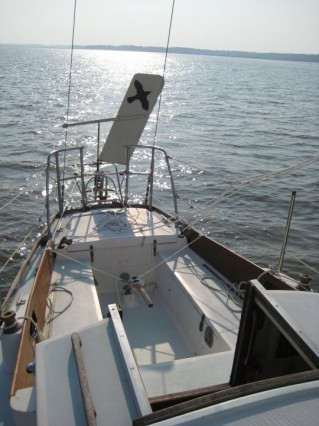
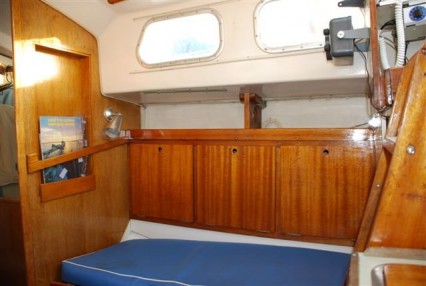
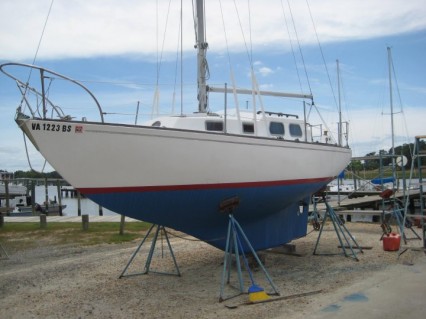
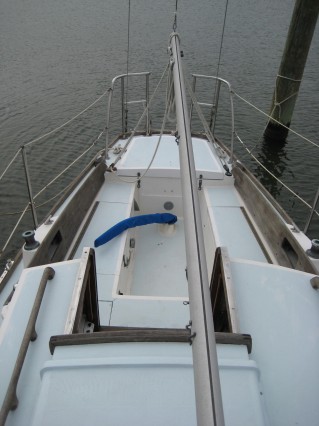
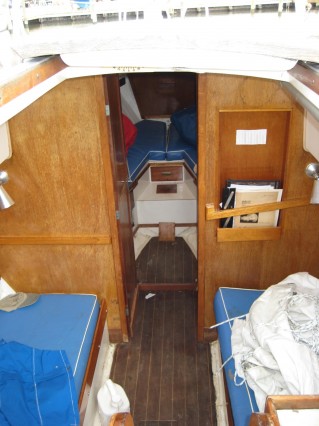
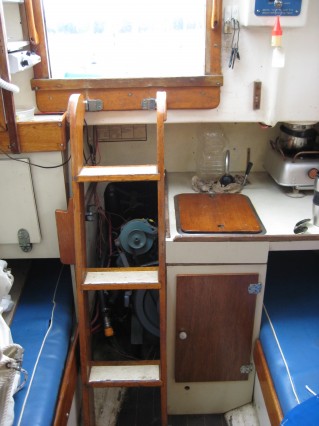
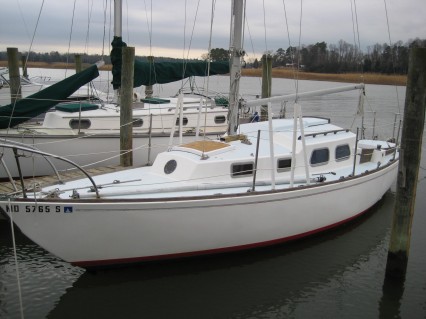
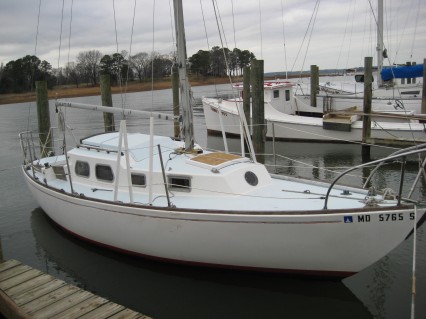
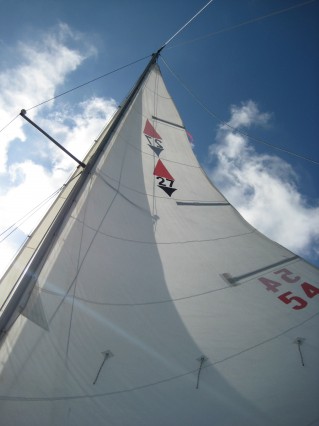
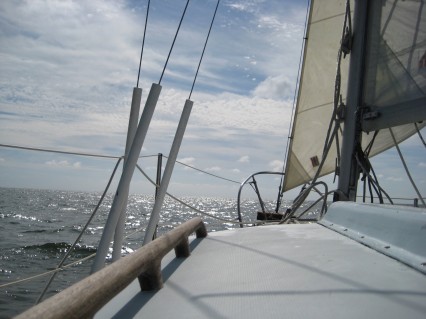
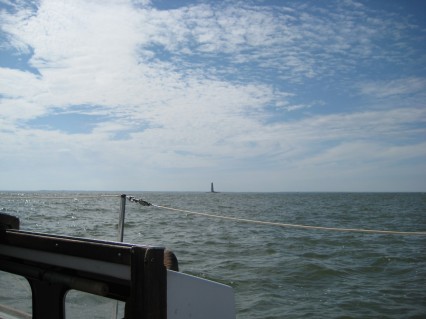
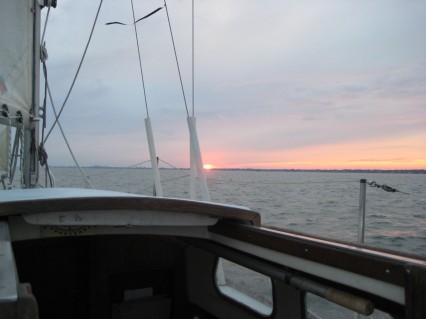
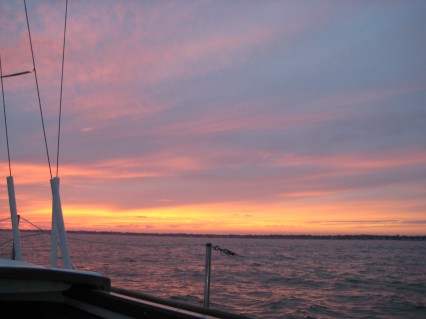
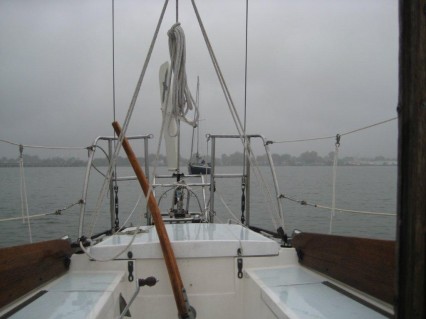
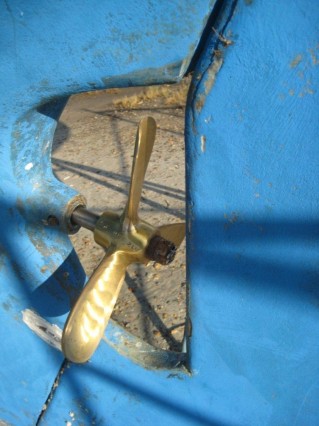
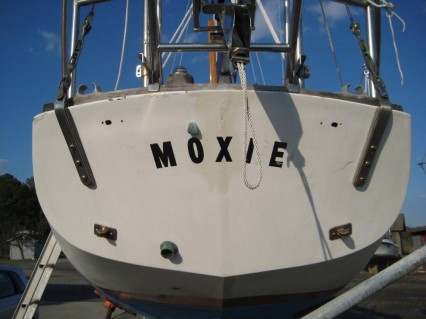
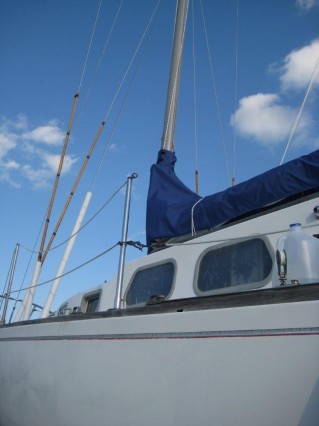
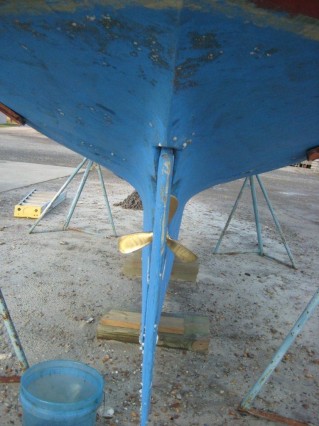
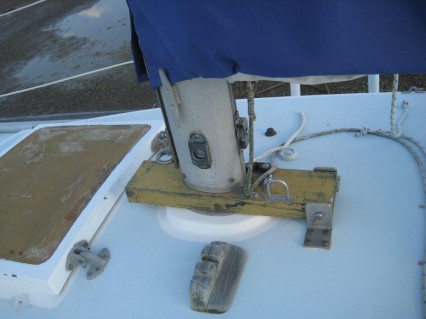
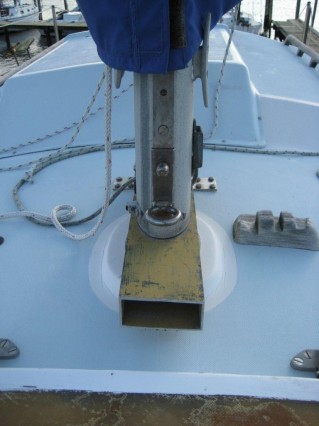
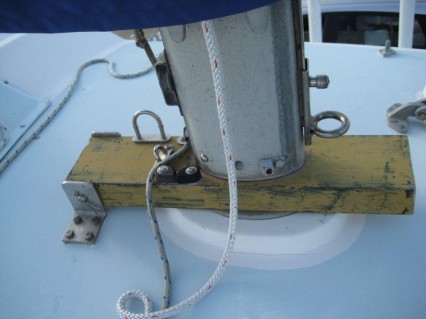
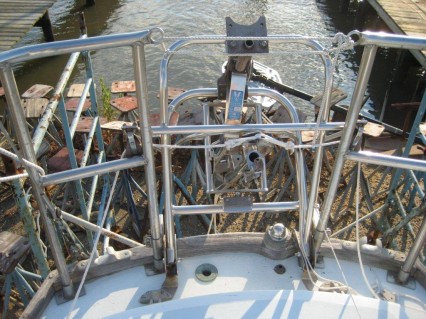
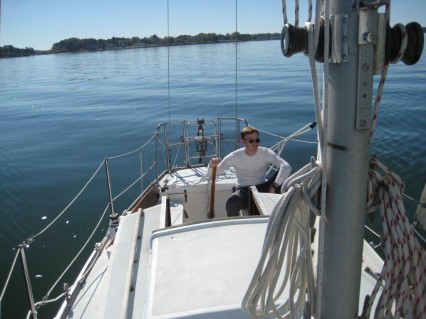
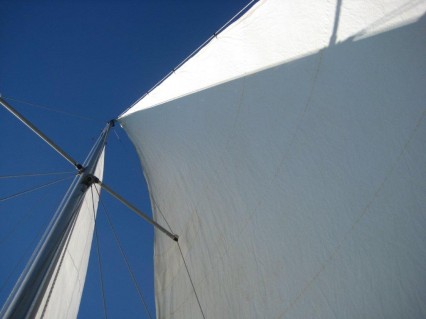
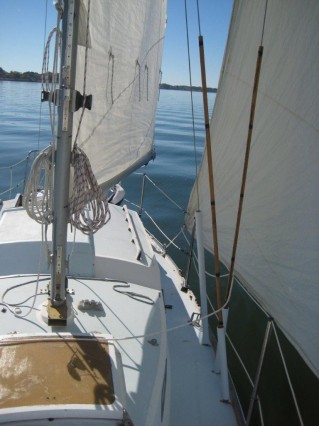
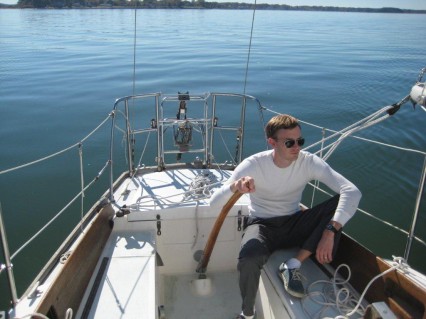
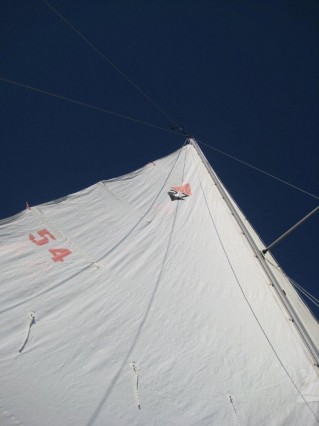
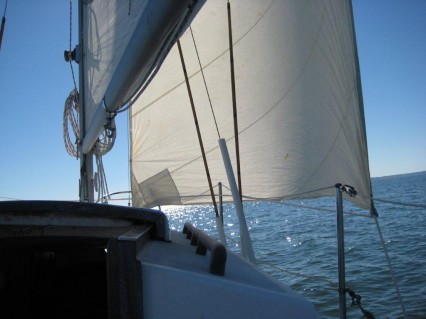
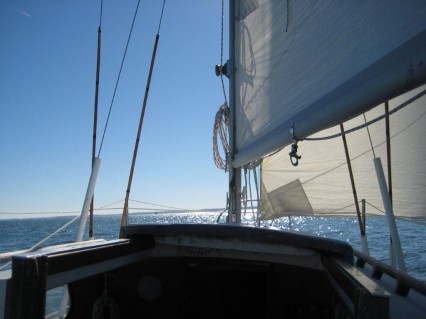
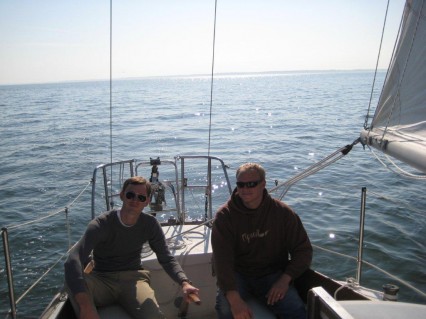
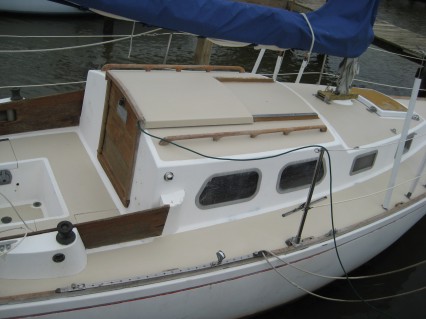
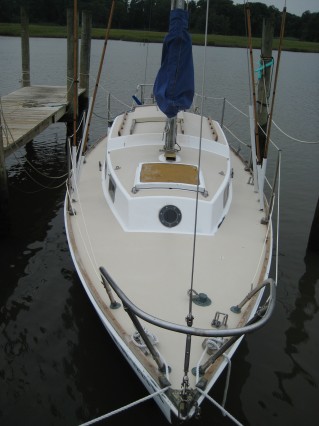
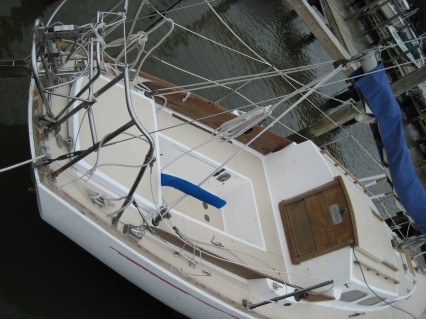
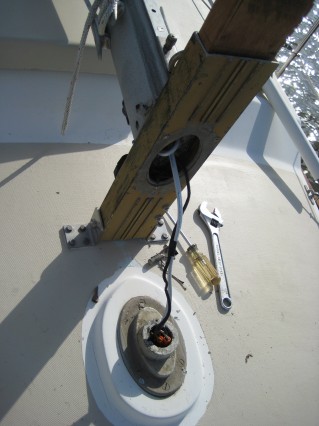
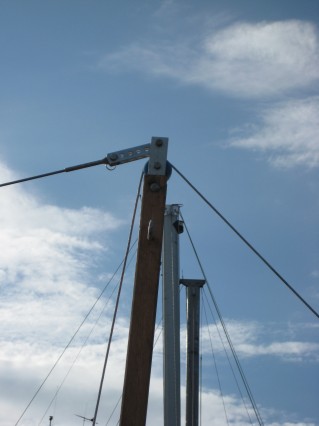
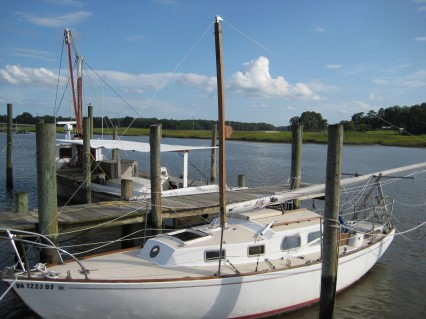
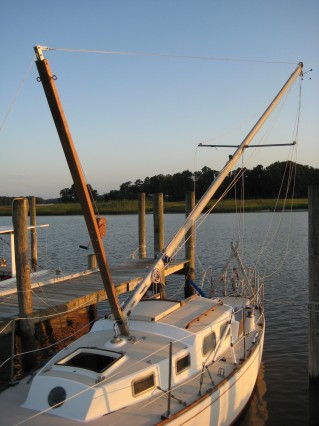
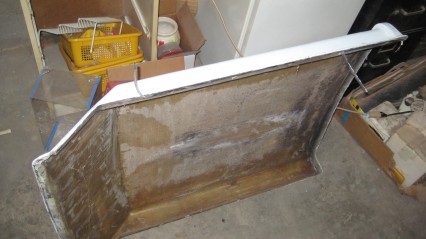
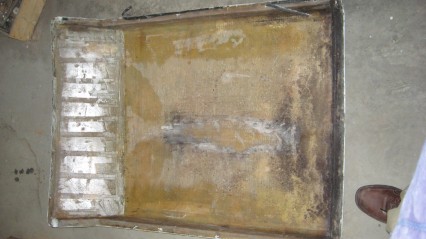
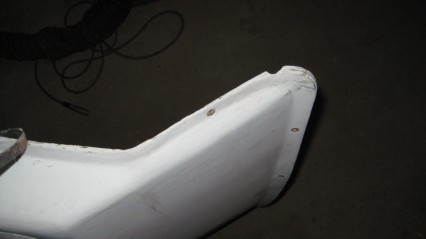
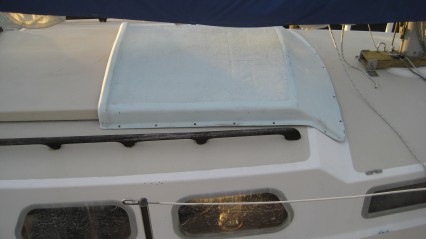
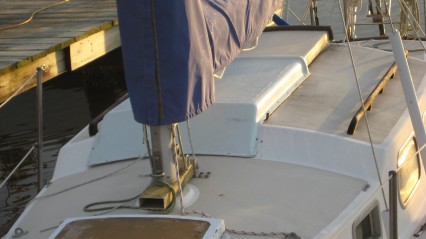
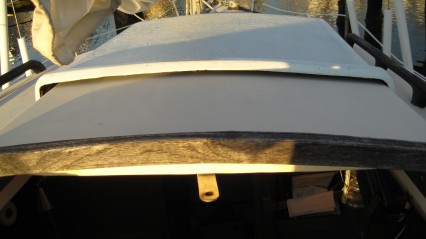
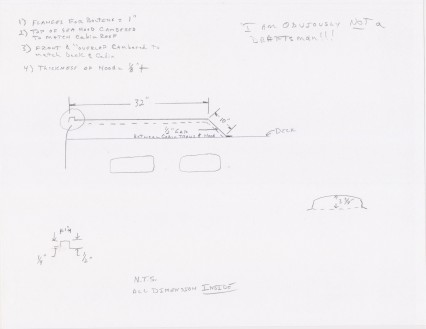
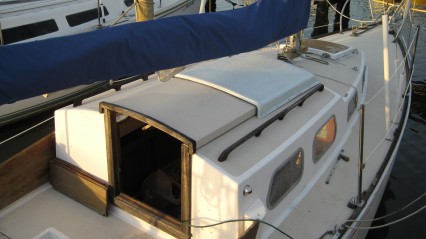
Quick Facts
- Model: Cruising
- Year Built: 1966
- Hull #: 54
- Vessel Name: Moxie
- Owner Name: Jim Creech
- Hailing Port: Port-Rescue, Virginia
Sailboat History
The Original owner lived aboard somewhere in New York for unknown length of time. 2nd owner purchased boat and sailed to Annapolis. This boat was sailed extensively on the Chesapeake Bay with occasional cruises from Maine to Florida and one trip to Bermuda (took him 8 days to get there). This is the person that built out the main cabin and added the Mast lowering system, Bow and Stern rails and life lines. He also added the Hasler SP-3 Wind Vane but never got to really put it to a real test. His age finally caught up to him and he sold the boat to a European who, with his family ,spent a summer cruising the Chesapeake. He only had the boat that one summer and I bought it on his return to Europe three years ago.
I have since been sailing on the Lower Chesapeake and Hampton Roads area and attempting to undo some of the less than admirable modifications done by the last owner. (there was a lot of tinkering with the electrical system to the point that it will be easier to completely rewire the boat than effect repairs!)
Owner Comments
January, 2014 – Seahood
I did not design [the seahood]. It was on the boat when I got it. I removed it when I painted the deck. Mine is easily removed, only about a dozen sheet metal screws. Make yours easily removable. Debris will collect under it and should you ever need to remove the sliding hatch the sea hood must be removed. My sea hood had some foam weather stripping along the sides but the part lapping over the transition was “open” to allow for drainage. My hood was placed far enough forward to fully open the hatch (I think). If there was any loss of space it was only about an inch. No problem getting in or out.
I [removed the seahood this winter]. not reinstalled the sea hood yet. It’s still sitting in my garage. [To help with your seahood planning, here are some measurements:]
- Max opening of the hatch is 24 ½”… 28 1/4 w/o the sea hood.
- Gap between the hatch and sea hood is approx.. 3/8” to 7/16”
Below is a drawn image of the seahood:
August 7, 2012 – Tabernacle
Below is information related to the tabernacle mast installed on Moxie:
- Tabernacle Lateral Movement – There is inherently little movement. If you study some of the previous photos you will notice that the hinge point of the tabernacle is aft of the mast almost in line with the aft lower shrouds. (I would have to take some measurements to give you an exact dimension).
- Tabernacling the Mast – To use the rig I first insert the 2×4 into the aluminum tube and attach the winch cable to a shackle on the stem fitting. I then loosen the forestay and attach it to the straps on the 2×4 and take a strain. The fwd lower shrouds hold the mast up. I then loosen and disconnect the fwd and main shrouds leaving the turnbuckles attached to the chain plates leaving the aft lower shrouds in place. The lower shrouds and tension on the winch keep the mast upright. Because the pivot point is aft of the mast I have to lift up on the 2×4 while backing off on the winch until gravity tales over then just crank the winch down until the mast lays in its crutch. There is little lateral movement when the mast is coming down as the aft lower shrouds keep it fairly restrained however due to the fact that the pivot is not aligned exactly athwart ships the mast usually falls about a foot off center of the cradle when down but there is enough play that by tugging on one of the loose shrouds at the last moment it easily aligns with the cradle. Standing the mast back up is reverse of the above. Basically, the aft lower shrouds do the same as the athwart ship lines. Note: the winch is a dual action winch which allows me to stop the process at any time in the event that something fouls or needs to be cleared away. It also allows me to ensure that the mast wiring is safely tucked in the mast and doesn’t get crushed which has happened. (That’s why the mast came down this time)! Granted it may look a little flimsy but it does work quite well and I can easily lower and raise the mast singlehanded. This system works for me however I like the prospect of a system that allows the mast to hinge above the boom. That would eliminate the requirement for removing the boom prior to lowering and would also allow for a shorter lever which could be easily stowed aboard.
- Direction of Tabernacle Tilt – This rig requires that the fwd hatch be removed to fit the 2×4. (an error in judgment) so with the mast aft I can refit the hatch if necessary. With the mast aft I can easily work on the spreaders, steaming light and lazy jacks from the cockpit. It also allows me to use a boom tent if needed.The fwd end of the boat is clear should I need to be underway for any reason. The prospect of having 20 some feet of unsupported mast hanging off the bow bothers me. If I need to work on the masthead I back the boat into the slip and work the mast head from the dock. Another good reason for the dual action winch. I can set the mast at any angle necessary to accomplish the task at hand.
August 8, 2011
While these boats are considered slow by today’s standards I frequently overtake and pass boats that should, by all accounts, be sailing circles around me. I would like to think that is due to my superior sailing skills however, I know my skill level so most of the credit goes to the boat! Sail inventory includes 2 Mains, working jib, Yankee, Genoa and huge drifter with the Yankee being my favourite as it provides good leeward visibility.
Accommodation below can be somewhat cramped and I often wish I had more room below but 98% of the sailing I do is single handed so in all honesty I do not need additional space. Because this is a narrow boat and I do mostly single handing I sometimes have trouble seeing the luff of the headsail while trimming. Since I do not race this is generally not an issue, just a minor annoyance.The Hasler SP-3 wind vane does a remarkable job with the wind fwd of the beam. Off wind I have to reduce the main to hold course. This is probably a sail trim/combination issue. With wind vanes the CE should be as far forward as possible. Vanes like to be “pulled” rather than “pushed”.
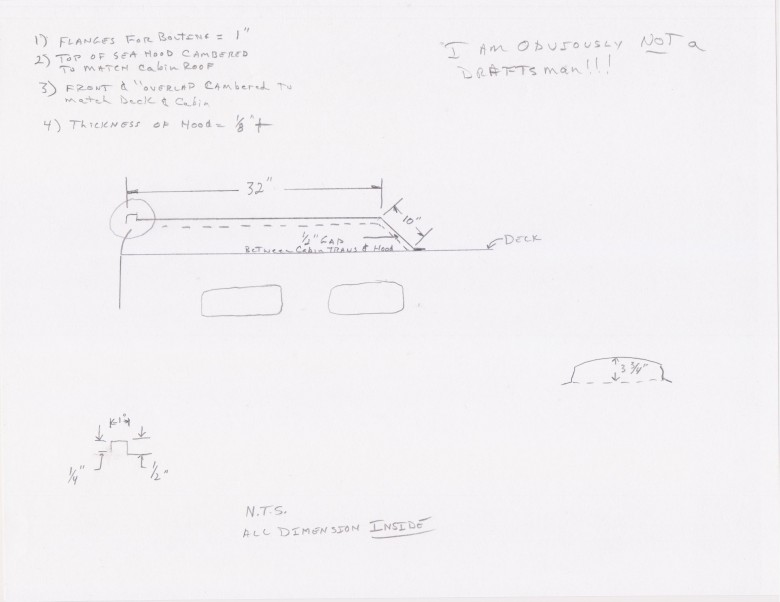
Comment Form